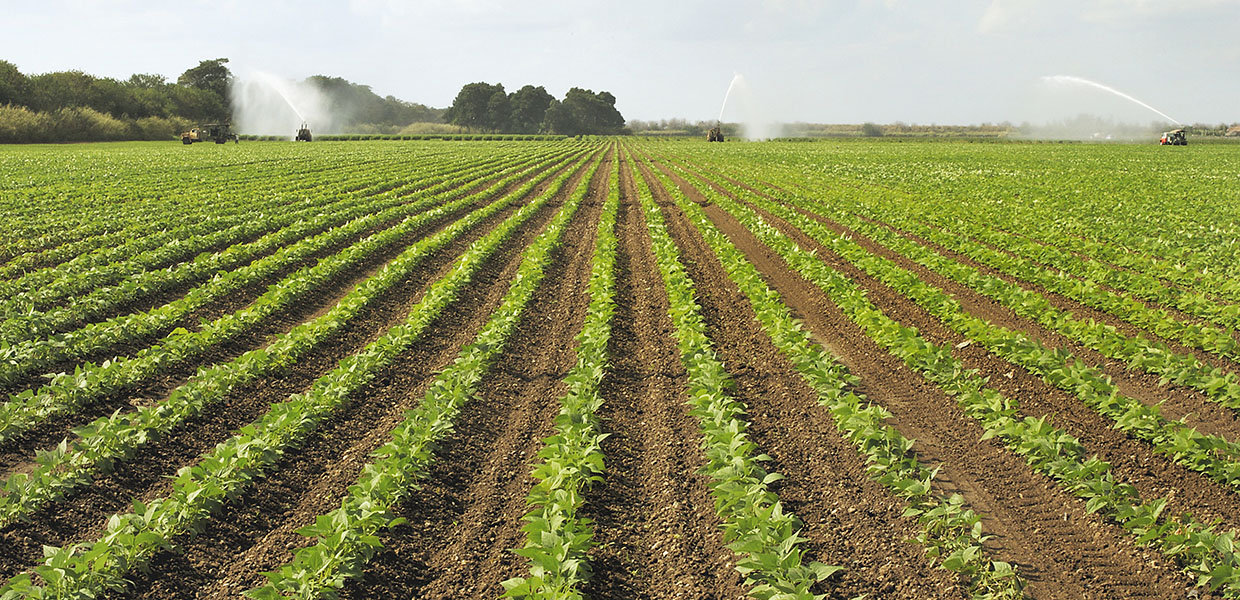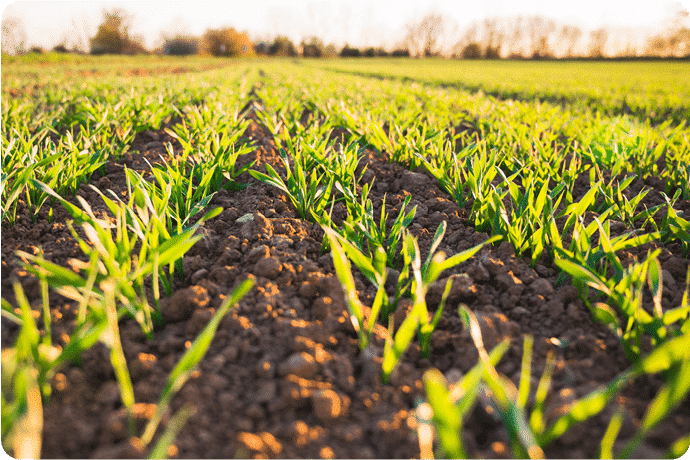Discovering Natural Farming in Modern Agriculture
Discovering Natural Farming in Modern Agriculture
Blog Article
Enhance Agricultural Efficiency With High-Quality Water Soluble Polymers
These polymers supply a range of advantages that can transform conventional farming techniques, from boosting water retention and effectiveness to maximizing dirt structure and nutrient delivery systems. By harnessing the power of innovative polymer services, farmers can possibly unlock brand-new pathways in the direction of accomplishing higher crop returns while minimizing ecological influences.

Benefits of Water-Soluble Polymers
Water-soluble polymers use a multitude of benefits in farming applications as a result of their improved water retention buildings and capacity to boost soil structure. Agriculture. These polymers, when contributed to the soil, can dramatically enhance water holding capacity, decreasing the frequency of watering needed by crops. By creating a gel-like material when blended with water, water-soluble polymers create a reservoir that gradually launches dampness to plant roots, guaranteeing a much more regular water during dry spells
In addition, these polymers assist in protecting against dirt disintegration by binding dirt fragments with each other, thus improving dirt structure and security. Boosted soil structure allows for better origin penetration and aeration, advertising much healthier plant growth and higher crop returns. Water-soluble polymers also help in nutrient retention by decreasing leaching, making certain that necessary nutrients continue to be offered to plants for a longer duration.
Improved Water Retention and Effectiveness
Enhancing farming water retention and efficiency through the consolidation of advanced polymer technologies has actually become a paramount emphasis in modern-day farming practices. Water-soluble polymers play an important duty in boosting dirt structure, boosting water infiltration, and decreasing water evaporation rates. By forming a thin film on the dirt surface area, these polymers aid to stop water drainage and increase the soil's water-holding capability, making sure that plants have access to an ample water supply.
Additionally, making use of premium water-soluble polymers can significantly minimize the regularity of watering, as they boost the soil's ability to preserve wetness for longer durations. This not just preserves water yet additionally reduces the power and labor prices related to irrigation methods. Furthermore, enhanced water retention and effectiveness result in much better nutrient uptake by plants, bring about enhanced crop yields and general agricultural productivity.
Boosted Nutrient Delivery Equipment
Given the substantial impact of premium water-soluble polymers on enhancing water retention and effectiveness in farming, the emphasis currently shifts towards optimizing nutrient distribution systems to further boost plant growth and return. Enhanced nutrient shipment systems play a crucial duty in making sure that plants get the necessary nutrients in a kind that is conveniently available for uptake, advertising their general wellness and productivity. By incorporating water-soluble polymers right into nutrient delivery systems, the efficiency of nutrient uptake by plants can be dramatically boosted.
One trick benefit of using top notch water-soluble polymers in nutrient distribution systems is their capability to regulate the release of nutrients, guaranteeing a controlled and steady supply to plants over an extended period (Agriculture). This regulated launch device helps stop nutrient leaching and runoff, thus optimizing vitamins and mineral use by crops and minimizing environmental influence

Soil Framework Optimization Techniques
Enhancing soil structure is extremely important in contemporary farming for taking full advantage of plant yields and advertising sustainable land administration techniques. Dirt framework optimization strategies play a vital role in making sure that soil gives a suitable atmosphere for plant growth. One key strategy is the addition of raw material, such as garden compost or manure, which aids enhance dirt structure by boosting its water-holding capacity and nutrient retention.
In addition, practicing minimum husbandry or no-till farming can prevent soil compaction and advertise the growth of a healthy and balanced soil structure. Cover chopping is an additional reliable technique that involves planting crops especially to enhance the soil and secure, stopping erosion and improving soil structure.
Additionally, implementing plant turning approaches can aid damage pest and condition cycles, while also improving soil structure through the differing root structures of different crops. Overall, employing these soil framework optimization techniques can result in enhanced agricultural productivity, reduced ecological effect, and lasting sustainability in farming methods.
Sustainable Solutions for Crop Yields

To attend to the obstacles of maximizing crop returns while promoting sustainable land management practices, exploring sustainable services becomes crucial in modern agriculture. straight from the source One sustainable solution for enhancing plant returns is the use of accuracy agriculture methods.
Additionally, promoting plant rotation Our site and cover cropping can help keep dirt wellness, decrease erosion, and boost vitamins and mineral cycling, ultimately adding to greater returns in time. Integrated pest administration methods likewise play a key duty in sustainable plant production by minimizing the dependence on chemical pesticides and advertising natural pest control methods.
In addition, spending in research and innovation for creating drought-resistant crop varieties and climate-resilient farming practices can aid alleviate the impact of environment modification on agriculture while making certain regular yields in the face of ecological challenges. By taking on these sustainable remedies, farmers can attain higher plant yields while guarding the health and wellness of the land for future generations.
Conclusion
To conclude, using top notch water-soluble polymers in agriculture supplies various advantages such as enhanced water retention, enhanced nutrient distribution systems, and optimized dirt structure. By applying sustainable options for crop returns, farmers can considerably raise agricultural performance and efficiency. Agriculture. Water-soluble polymers offer a environmentally pleasant and economical method to boost the general performance of farming methods, resulting in much better end results for both farmers and the environment
These polymers offer a variety of benefits that can reinvent traditional farming approaches, from improving water retention and effectiveness to maximizing dirt structure and nutrient delivery systems.Furthermore, these polymers help in avoiding soil disintegration by binding dirt particles together, therefore improving soil framework and security. By creating a slim movie on the soil surface, these polymers assist to stop water drainage and raise the dirt's water-holding ability, ensuring that plants have access to an appropriate water supply.
Dirt framework optimization methods play an essential role in guaranteeing that dirt supplies an excellent setting for plant development.In verdict, the usage of premium water-soluble navigate to this website polymers in farming uses many benefits such as improved water retention, enhanced nutrient distribution systems, and enhanced soil structure.
Report this page